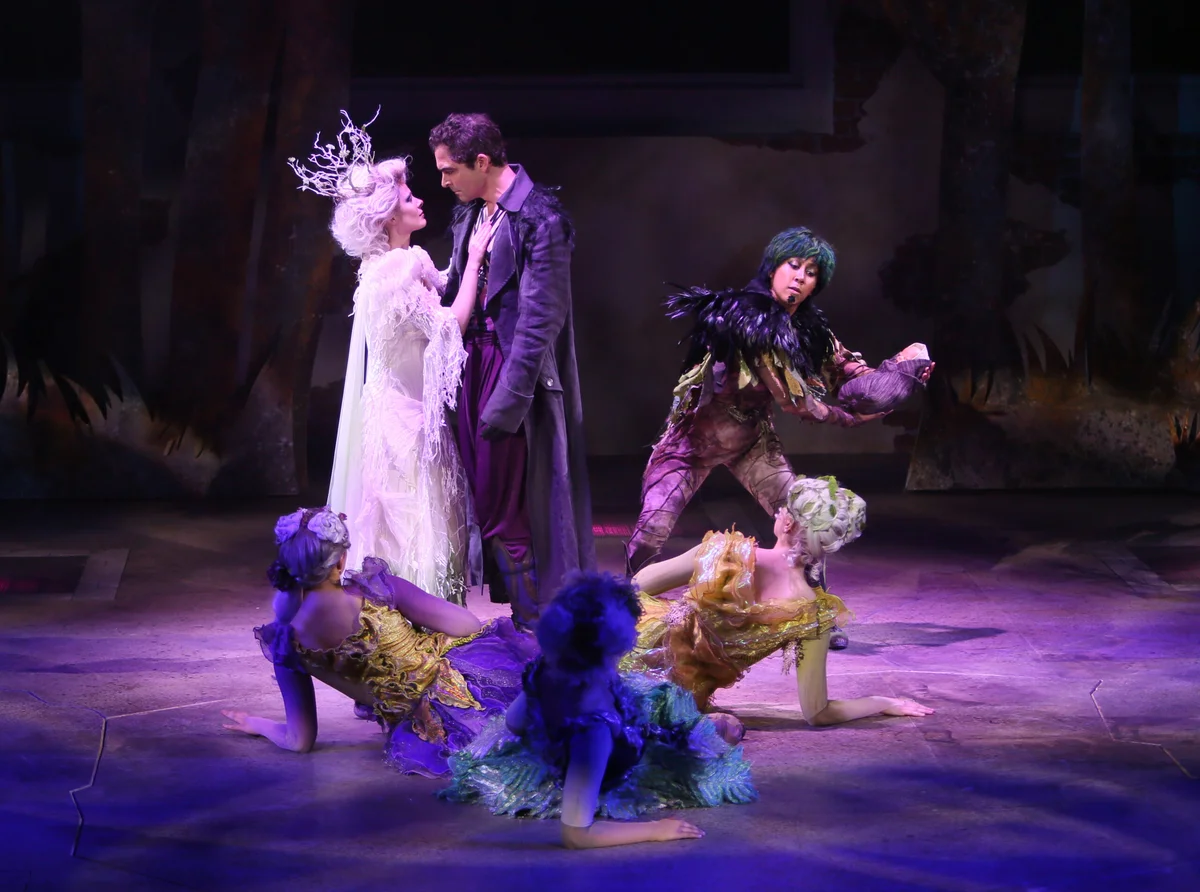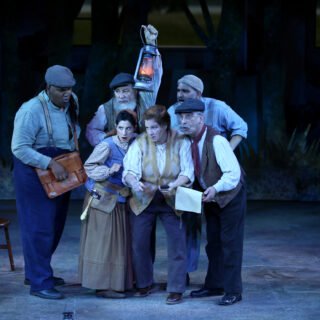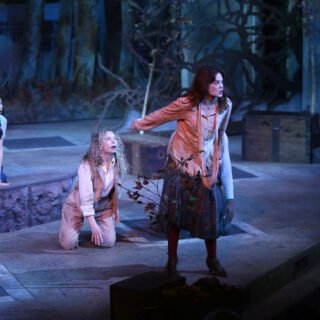
I’ve never really gotten Shakespeare. I remember when I read A Midsummer Night’s Dream for the first time in Grade 9. The jokes and the archaic language didn’t really make sense to me. My English teacher then said that, since they were plays, they were meant to be seen, not read. She then made some of us act out a scene in front of a class. The ‘performance,’ if you even want to call it that, was unenthusiastic and underprepared —we had to shove some desks together to make the ‘bed’ for Titania— but it did make me see a glimmer, a spark of how it was supposed to be. I got the play, if only for a single scene.
That’s what drew me to Bard on the Beach’s production of A Midsummer Night’s Dream. I wanted to see it performed in its entirety, like it was meant to be.
For those who were never forced to read it in high school, A Midsummer Night’s Dream is about four lovers and a troupe of tradesman-turned-actors visiting a forest on the eve of a momentous wedding. They unknowingly stumble into a feud between the Fairy Queen Titania and the Fairy King Oberon. Mistaken identity and chaos ensues.
In Bard on the Beach’s production, it’s set in the 1920/30s. Whatever the symbolic significance, it lent the play a delightful aesthetic: suspender belt pants and trench coats, cloches and paperboy hats. The classic costumes helped anchor the parts of the story set in the city, and contrasted with the fantastical strangeness of the woodland fairies in the play’s other half.
The set resembled an old abandoned warehouse with railings and massive arched windows that gave a great view of English Bay as the story progressed.
At 7:30 p.m., the lights went dark. A figure appeared in the window, resplendent in a white dress and crown: The Fairy Queen Titania singing a high clear ballad. With that, the show began.
It was fantastical. This was no low budget proxy put on by unenthusiastic Grade 9’s forced by their English teacher.
In an interview for Broadway World, UBC acting alum Sarah Roa, who plays Puck, said that the production “[leans] in hard to magic, joy, and love by investing deeply within the darkness and heavier plot points of the story.”
That darkness and magic was evident in the set design. Branches and trees burst out from inside the walls of the warehouse as the play moved into its forest sections, and the lights shifted from bright stark yellow to deep purples and blues, giving everything a dark, creepy air.
The servants of both fairy monarchs also lend to the dark atmosphere. These aren’t your typical whimsical fairies; Oberon’s servants slink around in hooded brown robes with sticks for weapons and wooden horns, while Titania’s attendants always move as if in dance, strange and slightly unsettling, painted in bright colours, petticoats flaring.
Each of the four main lovers— Heidi Damayo as Hermia, Christopher Allen as Demetrius, Emily Dallas as Helena and Olivia Hutt as Lysander (yes, they went with a female Lysander)— all play their parts with gusto. The four of them pull off the play’s extensive physical comedy beautifully, an element you miss when just reading it on the page. The scenes where they’re together are always in motion, something going on in the background even as someone is monologuing or conversing.
Billy Marchenski played Oberon with charm and grace— in a top hat and trenchcoat worthy of a swindler king— while Kate Besworth lended a strong regality to Titania. Roa’s Puck leaned into the darkness of the play, playful, but also slightly sinister at times. She also sprinkled in phrases of Tagalog, a unique touch from her Filipino heritage.
Carly Street played Bottom with heart — enough to charm, even if the slapstick humour isn’t quite your style (it’s not mine either).
The play hit a few small snags. Occasionally, Street used lines outside of the original text for comedic effect, and the change from iambic pentameter to a more modern rhythm felt slightly jarring, breaking immersion. The play within a play sequence at the end also felt a bit overlong, undermining the power of the resolution of the major dramatic storylines.
In the end, despite these problems, Bard on the Beach’s production of A Midsummer Night’s Dream is a fantastic one. The beauty, power and sheer immersion of the performances and stagecraft for the main storyline more than made up for the comedic misses, and if you happen to enjoy that type of thing, then all the better.
It’s a dark and beautiful, if occasionally interrupted, dream — perfect for a midsummer (or early autumn) night, and, if you have the time, I definitely recommend that you give it a chance.
Bard on the Beach’s A Midsummer Night’s Dream runs until September 24th. Tickets can be found either at their on location box office at Vanier Park, or through their website here.



